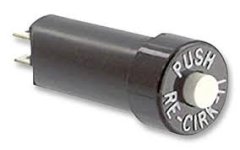rpoet
Member
I find myself needing to protect a large batch (16+) of small single phase 120V motors from overload; I've been told by the client their FLA is 4.9A. Is there a more elegant way of doing it than wiring all three phases of a 3-phase overload in series? I was hoping for something more compact than 50mm wide each.
Thanks,
rpoet
Thanks,
rpoet






